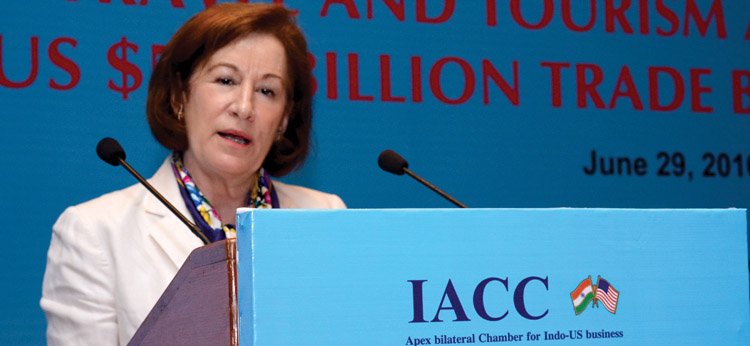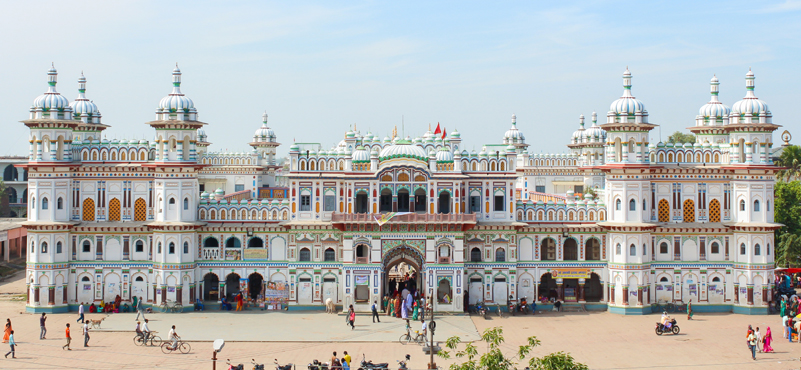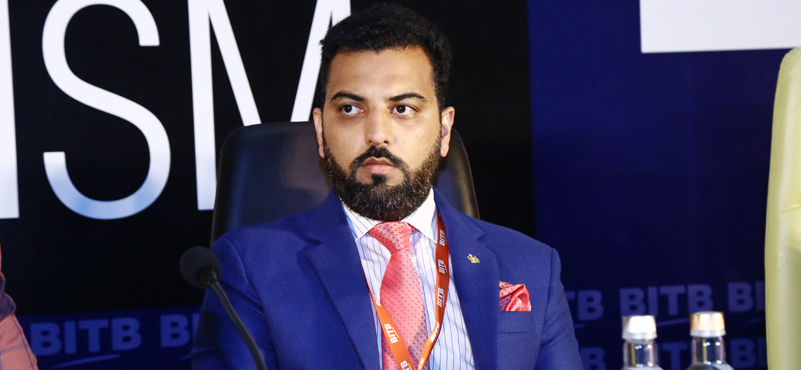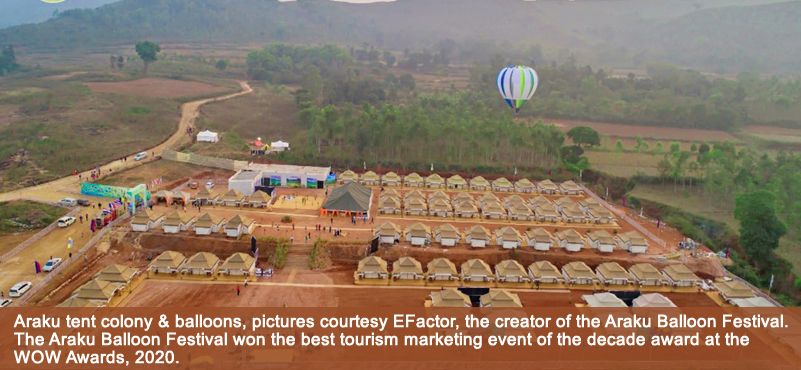Isabel Hill spoke extensively on how USA was in midst of systematically addressing some of the core issues impacting its tourism and travel industry. In a detailed address, she explained how US had brought on board various agencies at the federal, state and city level to create unison in strategy and implementation. She called India ‘critical’ to the USA market, hoping to leverage on increasing Indian outbound through mutual and concerted effort as both nations gear up to celebrate 2017 as the year of Indo-US cooperation on tourism. Excerpts of her address follows:
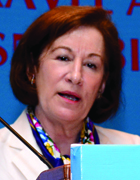
Isabel Hill, Director, National Tourism Office at US Department of Commerce began by thanking the gathering for the opportunity to absorb a wide range of opinion from key industry stakeholders. Noting that the discussion had helped her in extensively reflecting on the state of tourism in India and in the USA, she said “We reflected on our challenges and growth opportunities. And I see how similar we are in the nature of obstacles faced by both our industries, and in the opportunities that we see and seek for ourselves.”
Looking at areas of convergence, she called both the USA and India vast nations, with extraordinary landscape and vast cities. “We have tourism administration at the national level, and we also work to leverage the strength of our states and local authorities. But, we both need to improve and enhance the scope of our government infrastructure. We both struggle in air capacity to our key markets, and we both yearn to provide quality customer experience,” she said.
Concurring that while travel and tourism sectors in India and the USA may have been at different stages of development, she argued that the reality was that the process of development was an unending cycle. She noted that if both nations intended on competing in an increasingly competitive world, they needed to continue developing at each step.
She illustrated the steps taken by the United States government to improve travel and tourism, and facilitate conditions for growth. “To alleviate problems in tourism and travel is a critical priority of our government, along with enhancing the engagement of the government with the private sector. I also want to share with you how many of our priorities touch upon our partnership on tourism in 2017,” she said.
Elaborating by placing travel and tourism in context of the US economy, she explained the enormity of tourism in generating hard cash for the country. “Travel and tourism introduced 1.6 trillion US dollars into our economy last year. 220 billion US dollars of this sum is derived from international travel into the USA. Tourism, both domestic and inbound, supports 8 million jobs in our country, representing 2.7 percent of our GDP,” she said.
Adding that, interestingly, tourism accounted for one-third of all services exported out of the USA, annually, and over ten percent of global exports, overall, Isabel Hill said “In fact, in export, tourism and travel is larger than our automobile, agricultural or consumer export. With respect to international travel expenditures, in 2015, we have had 4 Asian countries in the list of top ten markets in terms of revenue.”
With respect to India, it stood as the seventh largest export market, contributing to over 10.6 billion dollars to the US economy.
Her assertion that Asia was developing as a key destination for outbound was further supplemented by the fact that only this year, China had become number one country in terms of export of trade and travel services for the USA. “India is the third fastest growing market for travel and tourism in 2015. In terms of number of visitors, the US welcomed 77 million tourists last year. Indian outbound accounted for 1.1 million visitors in 2015,” she elaborated.
The trend of Asia’s rise was in tandem with the downturn in footfall in international destinations including in the USA and Europe, she insisted. “Europe and the USA have been declining in tourism market share over the past years. On the other hand, destinations in Asia, in specific regions, have been on an increase, both as competitors and source market, and according to WTO, this trend is likely to continue until 2030,” Isabel Hill said.
In a bold admission, she agreed that USA had been left behind the curve. “I will be honest that US has been bit behind in recognizing the fact that we have a decreasing market share. And that is probably because we have been growing in absolute terms,” she said.
Isabel Hill called economic crisis in 2008 a watershed, “because we have a saying in our country: never let a good crisis go to waste,” she said.
Adding that with the new administration looking for every vehicle to grow the USA economy, they intended seize the opportunity to prioritize travel and tourism as a source of economic resilience. “Recognizing the importance of travel and tourism to the US economy, and its ability to support economic growth, President Obama signed a law that created the ‘Brand USA’” she said.
Brand USA is structured as a private corporation, the government appoints its board of directors to match private sector governors to market the US as a travel destination.
Now, the USA has trained its sight to hit a hundred million mark by 2021. “More importantly, we want tourists to spend over 250 billion dollars annually. We also set goals to encourage Americans to see what America has to offer. And I am not sure, frankly, given the slowdown in the world economy, when we are going to reach this goal,” said the Director.
She gave an exhaustive insight into the modus operandi adopted by the US government – which was to galvanize both the public and the private sector to work together towards our common goal. Detailing strategies, she said “firstly, we wish to engage Brand USA and our embassies to communicate that USA wants international visitors, and promote USA like never before. Secondly, facilitate lawful travel within the USA, besides providing world-class tourism experience by coordinating with whole of the government and the private sector, measuring our results to ensure progress.”
Lamenting that most strategies were developed to be sitting in the shop, until the next one was conceived, she said “To ensure their strategies did not meet the same fate, the USA had put in place a Tourism Policy Council with 12 federal agencies, with focus on coordinating programs and policies on travel and tourism across the government”.
Isabel Hill shared that USA had a travel and tourism advisory board that compromised of 32 representatives from the private sector, who were charged with advising the government on policies and programs that could affect the industry in a proactive way.
“Brand USA, federal agencies and the private sector are actively engaged to identifying and addressing all barriers to continue growth, and to identify opportunities that we can capitalize on,” said Isabel Hill.
Visa issue has been a thorn in the flesh, which paradoxically was triggered on the back of spurt in international travel, throwing American airports into a tizzy. “Greater numbers created some problems with our airports, as some of you may have experienced it, I am sorry to say. The lines at arrival gates were growing to unacceptable rates. Our US Customs and Border Protection partners, however, did not have the ability to provide more officers to address the problem. So, we worked on 17 different airports. At the local level, we developed 17 airport specific action plans bringing together airport authorities, airlines, tourism promotion organizations and private sector stakeholders, and we worked at the federal level, as well,” said Isabel Hill.
She further shared that their national tourism office worked with Customs and Border protection partners, besides engaging with private players like the Marriott Hotels and Universal.
The concerted effort from the larger tourism industry in the USA saw airlines investing in kiosks and mobile technology to speed up long queues, ensuring less time was spend processing administratively, and in dealing with passenger specific problems.
“As we continue to implement our travel and tourism strategies across the federal government and in ministries, here in the USA, we also want to make sure that we are doing it in our key markets,” emphasized Isabel Hill. She shared that USA had developed tourism specific plans in 11 of their key markets, which brought together all of US agencies in their embassies and consulates, as well as Brand USA representatives, and also private sector companies that are focussed on outbound travel. “In this way, we can bring greater focus on alignment within our US missions and with our private sector to leverage resources and maximum the potential in these markets,” the director said.
She agreed that the process might have been new for them, but it represented an evolution in their thinking and strategizing. “If we can facilitate public and private partnership and coordination across government agencies, it helps us not only in Washington, but across key markets,” she reasoned.
Calling India a particularly key market, she mentioned UNWTO statistics that has forecasted India emerging as one of the fastest growing outbound market for the foreseeable future. “India has set records in arrivals for the last five years. Over the last decade, travel and tourism exports from India have doubled, now accounting for over 62 percent of all US services export from India. While we are tremendously excited about the growth, it has created a few problems for us here in India,” she said. Pointing towards the anomaly of demand outpacing supply for visa, she concurred that it needed to be addressed quickly. “We can only appoint so many visa counselors. The wait time, I am sorry to tell you, for visa appointment in India is going to be as long as a month, and possibly longer. We are in negotiation with the government of India to expand our diplomatic footprint to move forward in this space. We are optimistic that these would be successful in a very mutual term,” she noted, hinting that expansion of US consular service in India in the coming days.
Giving her sense of Indian outbound, she said that they did have some understanding of their preferences. “Today, 40 percent of the Indian outbound to the US travels for business purposes and 30 percent visit friends and relatives – it is another way in which we are similar,” Isabel Hill informed.
Also, the average stay of Indian tourist is twice as long as the average stays of foreign visitors at nearly 40 nights. “However, Indian travellers have one of the lowest proportions of travellers visiting the United States for vacation and holiday in all our key markets. Clearly, there is opportunity for growth on both sides. Shopping of course, tops in the list of activities, but Indians are also visiting our parks, small towns and our exotic locations,” she reflected on some insights on Indian outbound.

